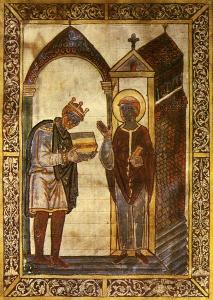First, the New Testament is part of the generated tradition of the early church, an account of its story-telling, teaching, and ministry. We find evidence in the New Testament for units of instruction being orally transmitted to the nascent churches by the apostles. In the Pauline churches, this included the story of the gospel (1 Cor 15:3–5), Jesus’s last supper with his disciples (1 Cor 11:23–26), and a general body of Christian teachings (Rom 6:17). Indeed, Paul tells the Thessalonians that they should “stand firm and hold fast to the teachings we passed on to you, whether by word of mouth or by letter” (2 Thess 2:15). Similarly, the risen Jesus tells the church in Sardis to remember “what you have received and heard” (Rev 3:3). What Jude calls the “faith that was once for all entrusted to God’s holy people” refers to the faith taught in the Old Testament Scriptures, the teachings of Jesus, the story of Jesus, and the apostolic instruction in the way of Jesus (Jude 3). The spiritually gifted teachers of the church had as their remit to pass on these teachings—stories and instructions about Jesus (see Acts 13:1; Rom 12:7; 1 Cor 12:28–29; Eph 4:11; Heb 5:12; Jas 3:1).
We might say that early Christian instruction was the exposition of a “tradition,” that is, a collection of teachings that were taught by Jesus to his apostles, combined with a distinctive way of interpreting the Old Testament that made Jesus the centerpiece of God’s promises, a tradition interpreted and augmented in light of their experience of God, particular habits and ethical instructions, and modes of worship, which were then transmitted and taught among the churches. This “tradition” is what largely generated the New Testament. The Gospels are the traditions from and about Jesus that were passed on by eyewitnesses, received by early leaders, and written down by the evangelists (see Luke 1:1–4). The New Testament letters use a lot of traditional materials—hymns, creeds, sayings, stories, vice lists, virtue lists, etc.—to instruct congregations in light of the situations they were facing (see e.g. early creedal formulas in Rom 1:2-4; 4:25; Phil 2:5-11; 1 Tim 3:16).
Thus: “Scripture is Tradition, in the sense that the New Testament writings are part of Tradition and constitute its normative element.”
Second, the body of Christian writings that circulated widely in the church created a tradition of interpretation that became the basis for the formation of the canon and the composition of the creeds of the early church. This tradition first emerged as the regula fidei, “the rule of faith,” and refers to the general outline of Christian beliefs that circulated in the second-century church. It was not a wooden doctrinal statement, more of a flexible précis of the narrative of Scripture. Vanhoozer calls it is “a summary of the main theodramatic plot [and] the prototype of catholic theology.”












